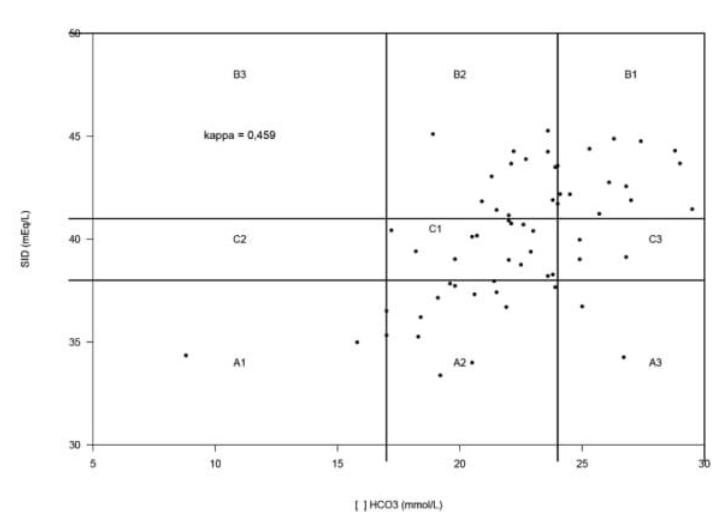ABSTRACT
Vomiting and diarrhea are two important clinical signs that can cause significant electrolytic and acid-base imbalances. The purposes of this study were to characterize hydric, electrolytic and acid-base disorders presented by puppies with hemorrhagic gastroenteritis and to compare the traditional and quantitative approaches to acid-base status interpretation. Sixty-one animals with a history of vomiting and/or diarrhea were used in this study and the following tests were performed: complete blood count, total plasma protein concentration and hemogasometry. Mean, standard deviation and Kappa values were calculated. The imbalances characterized by both approaches were: 42 (69%) animals without imbalance, 17 (28%) with metabolic alkalosis and 2 (3%) with metabolic acidosis by the traditional approach and 17 (28%) dogs without imbalance, 26 (43%) with metabolic alkalosis and 18 (29%) with metabolic acidosis by the quantitative approach. The agreement calculated between two approaches coincide in 28 cases, with a moderate Kappa value equivalent to 0.459. The most found imbalances were metabolic alkalosis, hypokalemia, and mild dehydration. Most of acid-base disturbances were not identified by the traditional approach, whereas by the quantitative approach, they were easily determined. Thus quantitative approach proved to be superior in identification of possible acid-base imbalances.
Keywords:
acid-base disorders; dehydration; strong ion model

